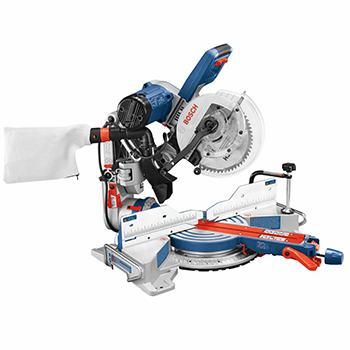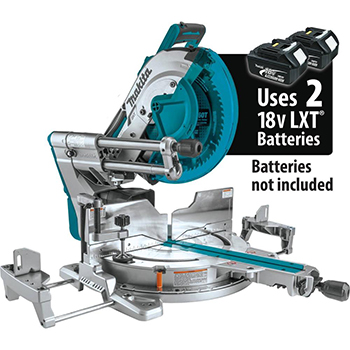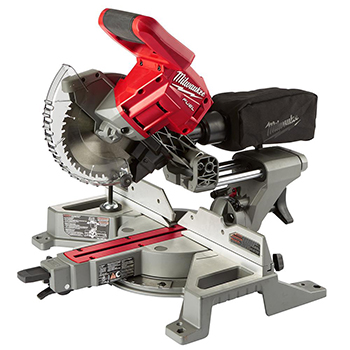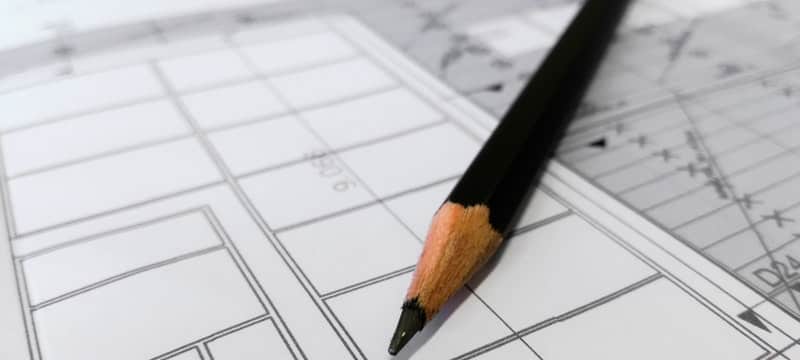Miter saws are a type of bench and stationary machinery that improve on the basic chop saw design and let you make precise cuts at various angles. They’re ideal for creating angle joints or decorative pieces. The top-rated miter saw models provide easy repeatability to speed up your productivity. There are several factors to take into consideration, and here we’ll explain the most important features to look for and what they mean.
Saw Types


There are three main types of miter saws: standard, compound and sliding miter saws.
- Standard miters saws rotate to the side, so you can cut the board from the top at an angle. This allows you to easily create corner pieces for a variety of projects.
- Compound miter saws also bevel, or tilt, to allow you to cut your piece at different angles, both horizontally and vertically.
- Single-action compound miter saws bevel only to one side, while dual-action saws bevel to both sides for greater versatility.
- Sliding miter saws add an additional function. They slide forward so you can cut wider pieces than the blade would normally allow.
The sliding design lets you make wide cuts, although it doesn’t increase the cutting depth. The compact design is ideal when your workspace is not large enough to accommodate larger miter saw sizes. The width of the blade plus the sliding depth determine the total board width you can cut with a single pass. You can double this distance by flipping a board around, but you have to make sure to line the board up exactly or you get an uneven cut.
Maximum Angles
The maximum angle your saw can miter to determines the pieces you can cut. A saw generally cuts perpendicular to a piece, so it starts at 90 degrees. The given values for a specific saw’s maximum miter angle are how far in either direction the saw can turn. The greater a saw’s maximum miter angle, the more versatile its performance.
The maximum bevel angle determines how far a saw can tilt. Various types of miter saws have different maximum angles. While a single-action compound miter saw only tilts in a single direction, you can make cuts at the angle you need by turning the board over and cutting it backwards. If you opt for a dual-action compound miter saw you save yourself lots of time, and potentially mistakes, by not having to move your piece and calculate its new angle.
Accuracy Features


Angle stops, also called detents, are preset at various positions around the saw. Each stop is measured for a commonly used cutting angle, for example, 45 degrees. Many angle stops are set at regular intervals so you can quickly add or subtract an angle from your cut. When you place the saw on an angle stop, it locks so that every cut you make gets repeated. This makes it quicker and easier to reproduce cuts. Compound miter saws may have both miter and bevel stops. You can set the miter to any angle you like without using the stops, which is helpful when you have to make a non-standard cut.
A laser guide uses the same technology as a laser pointer to show you exactly where the blade is positioned to cut. Some saws use LEDs to illuminate the cutting area instead. This allows you to easily line up your blade with your cut marks. You save time from guessing the blade location and then checking before you make your cut. If you keep an eye on the laser guide or LED lights, you can also tell if your piece has moved since you started bringing down the saw.
If you have a miter saw with regular angle stops and a laser guide, you can set it to the correct bevel/miter angle in a couple seconds, and then line your work piece up to ensure that you’re cutting to the right length. This can save you hours off of a commercial-scale product, since your work is essentially reduced to placing the piece against the fence and chopping.
Safety Features
Aside from basics like safety glasses, appropriate lighting and suitable workspace, you can enhance safety by making your next saw one that comes with built-in safety features.
Dust Extraction
Dust extraction prevents sawdust from getting into your eyes, nose, mouth or ears. Sawdust is a breathing, slipping and fire hazard, so managing it is essential for the safety of your workshop. Miter saws that come with dust collection bags keep much of the sawdust from getting into the air. As an alternative, consider equipping your shop with dust collection units.
Miter Table
A miter table allows you to set up long pieces and keep them lying flat without the danger of cracking or falling. Use a safety clamp to keep your piece firmly in place and to avoid any accidents that come from having a piece fly out at you.
Blade Guard
A blade guard protects your face, hands and body from getting cut. It covers the majority of the blade when you aren’t using the miter saw, and it retracts upward as you plunge the saw down to your work piece. It usually still covers the outer portion of the blade to protect you during cutting operations.
Electric Brakes
Electric brakes stop the blade once you let go of the trigger. It can take a long time for a blade that was spinning several thousand times per minute to come to a stop, which is a safety risk. Electric brakes can reduce this time to as little as two seconds, which can be the difference between a shallow cut and the loss of a finger.
Productivity Features
Blades
Blades are essential to getting your work done. Stock up on them in advance so that your work is not interrupted by a dull blade, and keep several types of blades on hand that are designed for one purpose for another. Larger miter saw sizes accommodate larger blades, which in turn speeds up your work and allows you to cut thicker pieces. Carbide blades are incredibly durable and give accurate cuts.
Make sure to check the manufacturer’s documentations for any warnings against specific blade types. Different types of miter saws may have different spindle types, and these affect how you change out saw blades. Some come with a spindle wrench, so you don’t have to purchase one later just to change the saw’s blade.
Cordless


Cordless miter saws are useful additions to your cordless tool set. They’re ideal for construction jobs, since you save a great deal of time from transporting material to a workshop and then back to the job site. For easy transport, get a cordless model with wheels and carrying handles.
Cordless models tend to have less power than corded miter saws, so if you really need the power, such as when you’re working with incredibly hard materials, it may be a better choice to simply go with a corded model and bring a generator to your site.
Motor Power
The more powerful the motor, the easier the saw cuts through hard material. For a good estimation of your cutting speed, look at a saw’s RPM, or revolutions per minute, rating. The higher the RPMs, the faster the blade spins and the easier it cuts.
Miter saws allow you to create factory-quality pieces in your own workshop. They’re fast, accurate and simple to use. Now that you know how to choose a miter saw, browse our full selection, check their various features and grab the model that best suits your needs.


